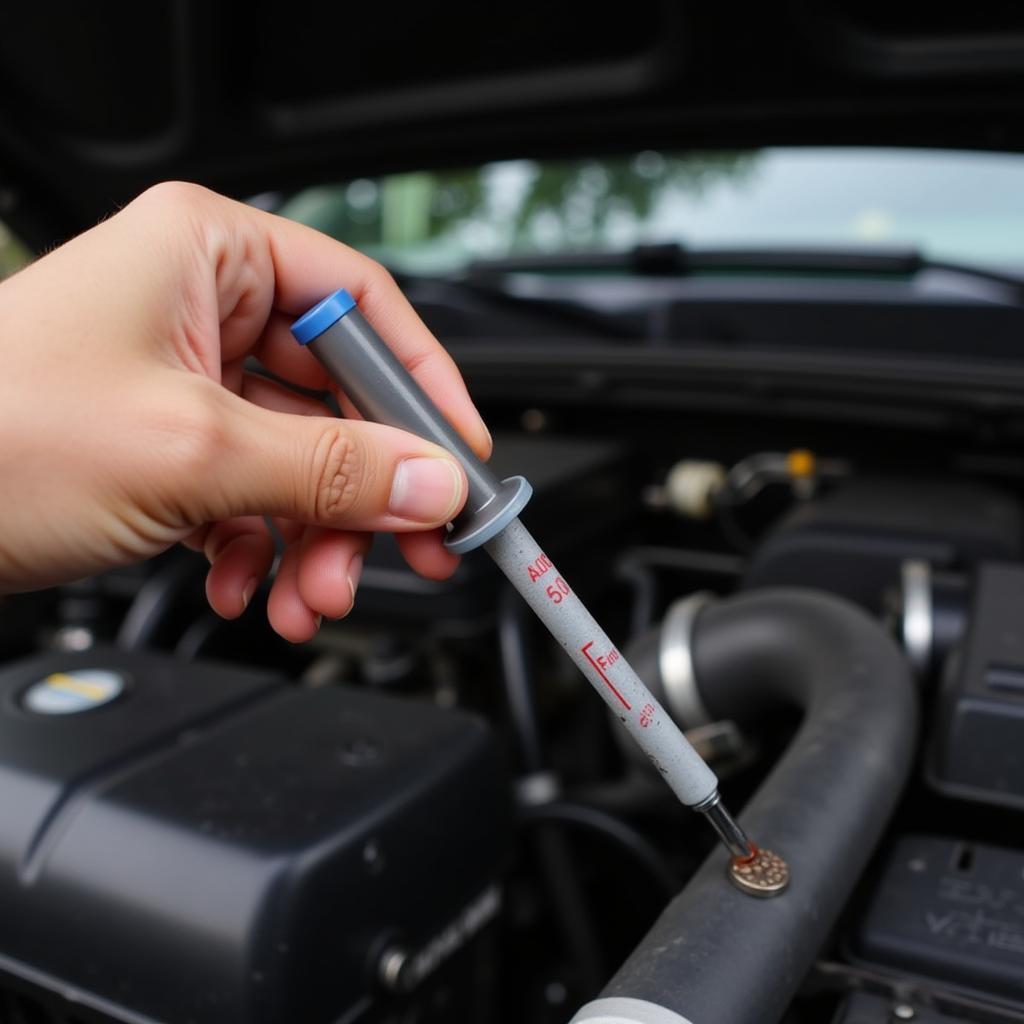If your car sputters and you suspect a carburetor problem, you’ve come to the right place. This guide will help you diagnose, troubleshoot, and potentially fix the issue, whether you’re a car owner, mechanic, or automotive technician. We’ll cover everything from the basics of carburetor function to advanced diagnostic techniques.
Understanding the Carburetor’s Role
The carburetor is the heart of a fuel delivery system in older, non-fuel-injected vehicles. It’s responsible for mixing the correct ratio of air and fuel for combustion in the engine. A malfunctioning carburetor can lead to a variety of issues, including sputtering, stalling, rough idling, and poor fuel economy.
Common Causes of Carburetor Sputtering
Several factors can contribute to a car sputtering due to carburetor problems. These include:
- Clogged fuel filter: A restricted fuel flow starves the engine, causing sputtering, especially under acceleration.
- Dirty carburetor: Gum, varnish, and other deposits can accumulate in the carburetor’s jets and passages, disrupting fuel flow and mixture.
- Vacuum leaks: Leaks in the intake manifold or carburetor gaskets can introduce unmetered air into the engine, leading to a lean air-fuel mixture and sputtering.
- Faulty accelerator pump: The accelerator pump provides an extra squirt of fuel when you press the gas pedal. A malfunctioning pump can cause hesitation and sputtering during acceleration.
- Incorrect float level: The float regulates the fuel level in the carburetor bowl. A float set too high or too low can result in an overly rich or lean mixture, causing sputtering.
- Choke issues: A stuck or malfunctioning choke can cause sputtering, especially when the engine is cold.
Diagnosing a Carburetor Problem
Diagnosing a carburetor issue requires a systematic approach. Start by checking the basics:
- Inspect the fuel filter: A visibly dirty or clogged fuel filter should be replaced.
- Check for vacuum leaks: Use carburetor cleaner to spray around the intake manifold and carburetor base. A change in engine idle indicates a vacuum leak.
- Examine the air filter: A dirty air filter restricts airflow and can exacerbate sputtering. Replace if necessary.
Advanced Diagnostic Techniques
For more in-depth diagnostics, consider these steps:
- Check the fuel pressure: Low fuel pressure can indicate a problem with the fuel pump or fuel lines.
- Inspect the spark plugs: Fouled spark plugs can be a symptom of a rich fuel mixture, often caused by carburetor issues.
- Perform a compression test: Low compression in one or more cylinders can cause sputtering and may indicate a more serious engine problem.
“A thorough diagnosis is crucial before attempting any repairs,” says John Carter, a seasoned automotive technician with over 25 years of experience. “Jumping to conclusions can lead to unnecessary expenses and frustration.”
Repairing or Replacing the Carburetor
Depending on the severity of the problem, you may be able to repair the carburetor by cleaning it or replacing specific components. However, in some cases, a complete carburetor replacement may be necessary.
When to Seek Professional Help
While some carburetor issues can be addressed by DIY enthusiasts, complex problems often require the expertise of a qualified mechanic. If you’re unsure about any step of the diagnostic or repair process, it’s best to seek professional help.
Conclusion
A car that sputters due to a carburetor problem can be frustrating. However, by understanding the common causes and following a systematic diagnostic approach, you can pinpoint the issue and get your car running smoothly again. Remember, a clean and properly functioning carburetor is essential for optimal engine performance and fuel efficiency. For further assistance, feel free to connect with AutoTipPro at +1 (641) 206-8880 or visit our office at 500 N St Mary’s St, San Antonio, TX 78205, United States.
FAQ
-
Can a bad carburetor cause my car to backfire? Yes, a carburetor problem, such as a lean air-fuel mixture, can lead to backfiring.
-
How often should I clean my carburetor? It’s generally recommended to clean your carburetor every 25,000-50,000 miles or as needed.
-
Is it difficult to rebuild a carburetor? Rebuilding a carburetor can be challenging, but with the right tools and instructions, it’s achievable for many DIYers.
-
How much does it cost to replace a carburetor? The cost of a carburetor replacement varies depending on the make and model of your vehicle but can range from $200 to $600.
-
Can I drive my car with a bad carburetor? Driving with a faulty carburetor can lead to further engine damage and reduced fuel efficiency. It’s best to address the issue promptly.
-
What are the symptoms of a flooded carburetor? Symptoms of a flooded carburetor include a strong gasoline smell, difficulty starting the engine, and black smoke from the exhaust.
-
Can a vacuum leak cause a car to sputter at idle? Yes, a vacuum leak can disrupt the air-fuel mixture, causing sputtering at idle.






Leave a Reply